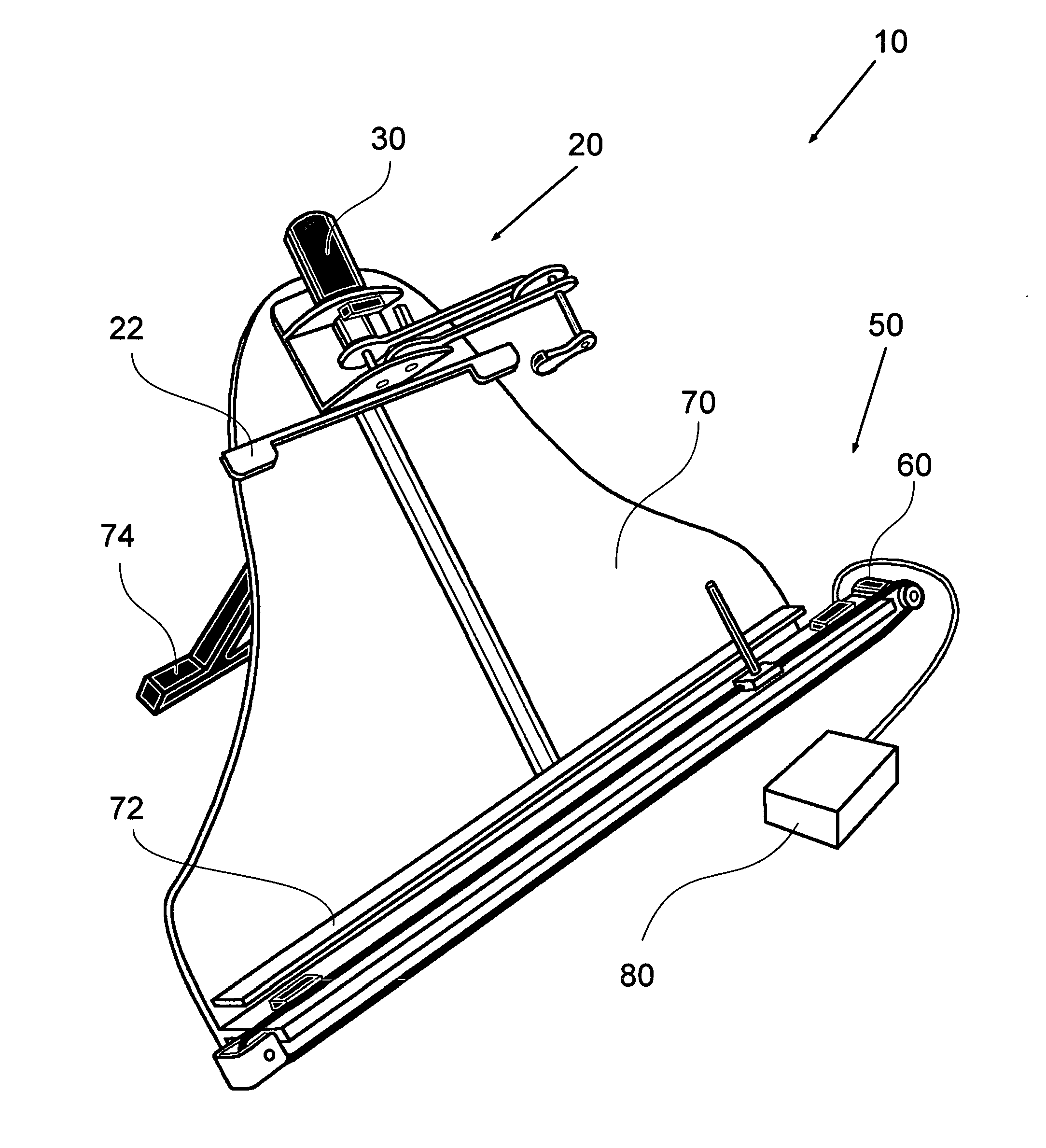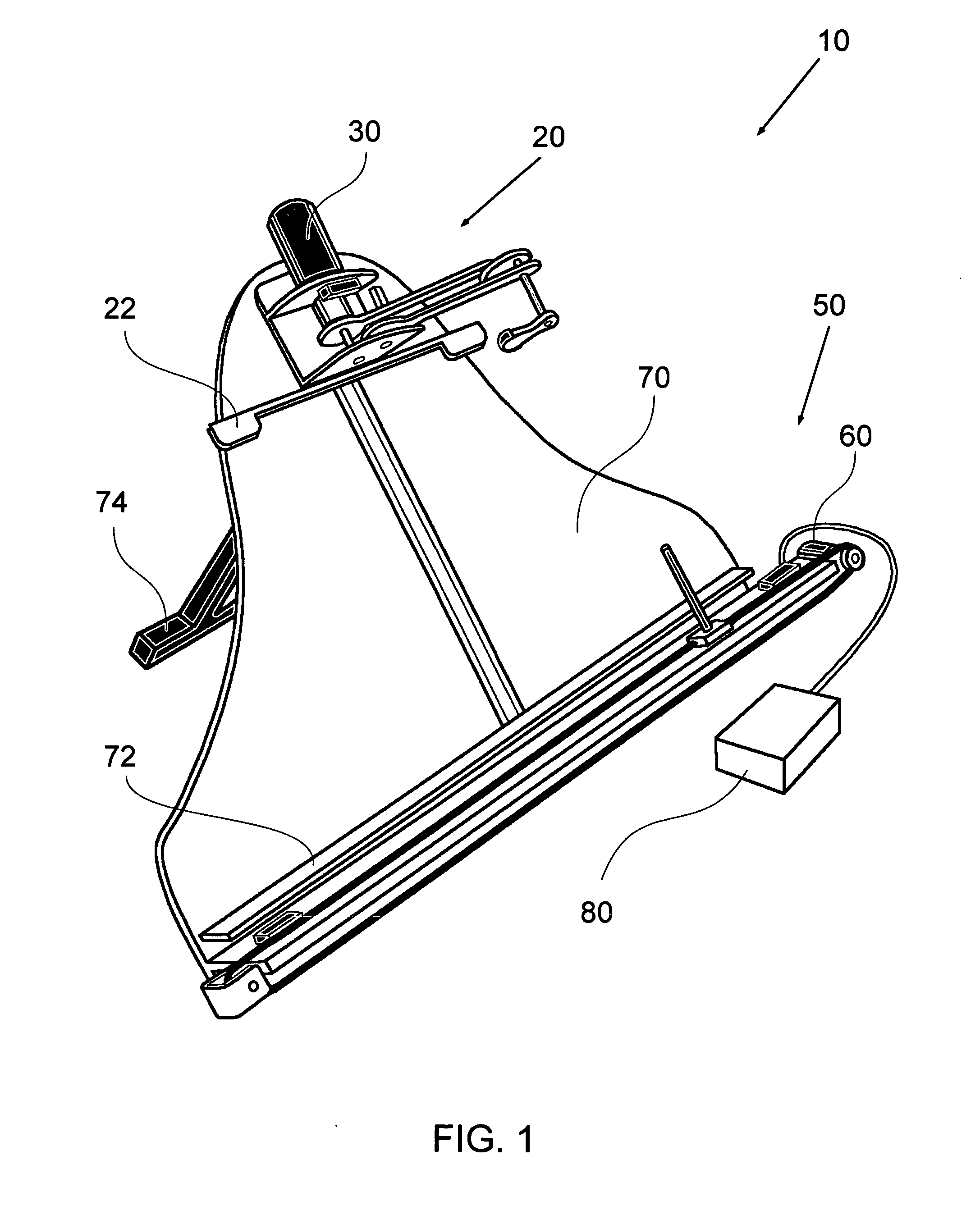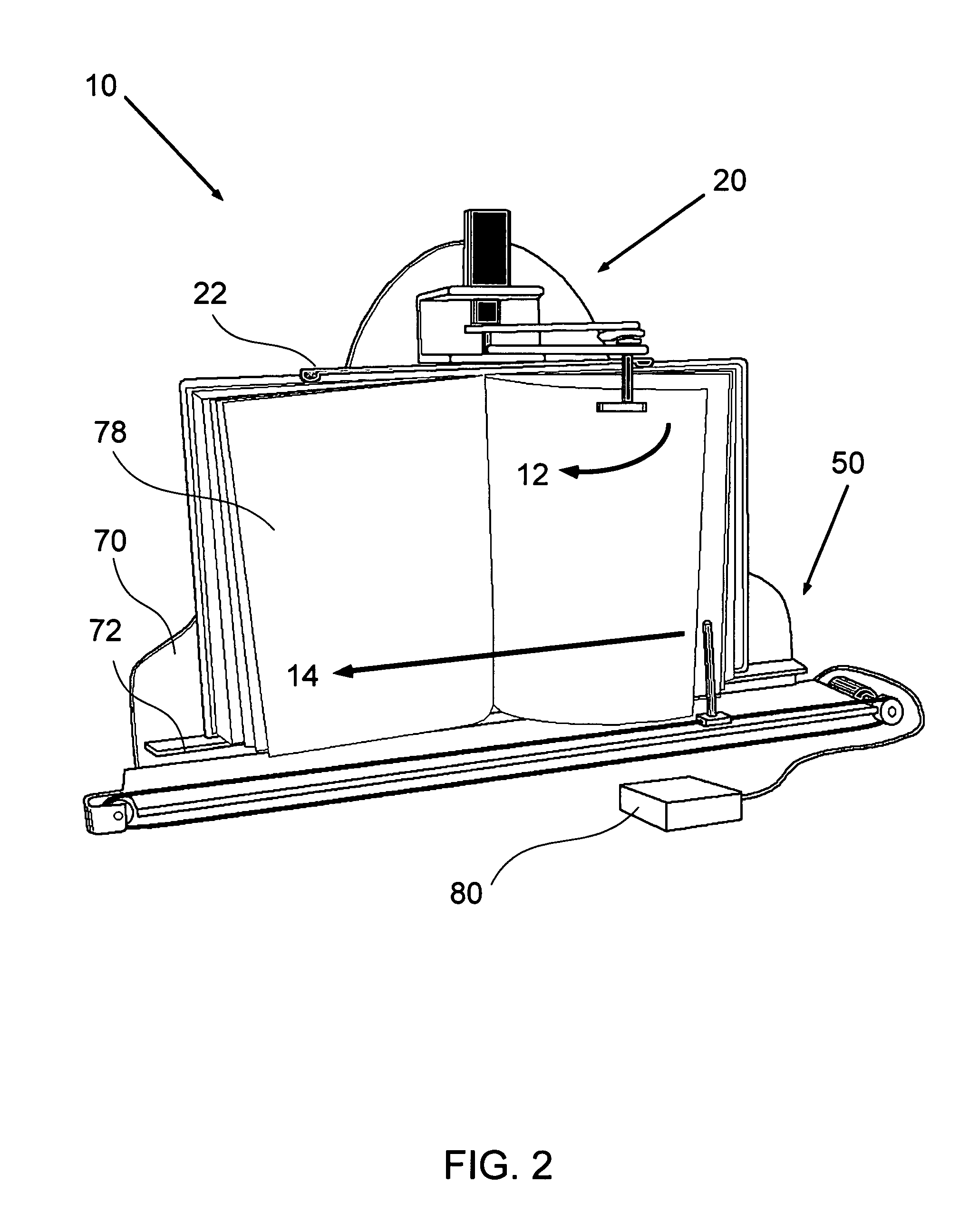Automated page turner
a page turner and automatic technology, applied in the field of assistive technology for persons with disabilities, can solve the problems of affecting the quality of life, affecting the enjoyment of life, and affecting the enjoyment of life, and presenting a significant challeng
- Summary
- Abstract
- Description
- Claims
- Application Information
AI Technical Summary
Benefits of technology
Problems solved by technology
Method used
Image
Examples
Embodiment Construction
[0026] Referring to FIG. 1, the automated page turner device (10) is generally shown. The lifting mechanism (20) is placed at the top of the base (70). The shifting mechanism (50) is attached to the bottom of the base. The book clamp (22) is an integral part of the lifting mechanism (20) and is adjustable to receive the cover of a book (not shown). The ledge (72) is attached near the bottom of the base to support the book. The apparatus is supported by a leg (74) attached to the backside of the base. Other possible means to support the apparatus include a stand, an easel, or a mechanical mounting arm (not shown). The controller (80) is a microprocessor based electronics device that controls the operation of the automated page turner.
[0027] Referring to FIG. 2, a book (78) is placed in the apparatus and the page turning operation is in progress. The book is supported by the base (70), the ledge (72), and the book clip (22). A page is turned in two steps: First, the page is lifted by...
PUM
 Login to View More
Login to View More Abstract
Description
Claims
Application Information
 Login to View More
Login to View More - R&D
- Intellectual Property
- Life Sciences
- Materials
- Tech Scout
- Unparalleled Data Quality
- Higher Quality Content
- 60% Fewer Hallucinations
Browse by: Latest US Patents, China's latest patents, Technical Efficacy Thesaurus, Application Domain, Technology Topic, Popular Technical Reports.
© 2025 PatSnap. All rights reserved.Legal|Privacy policy|Modern Slavery Act Transparency Statement|Sitemap|About US| Contact US: help@patsnap.com



